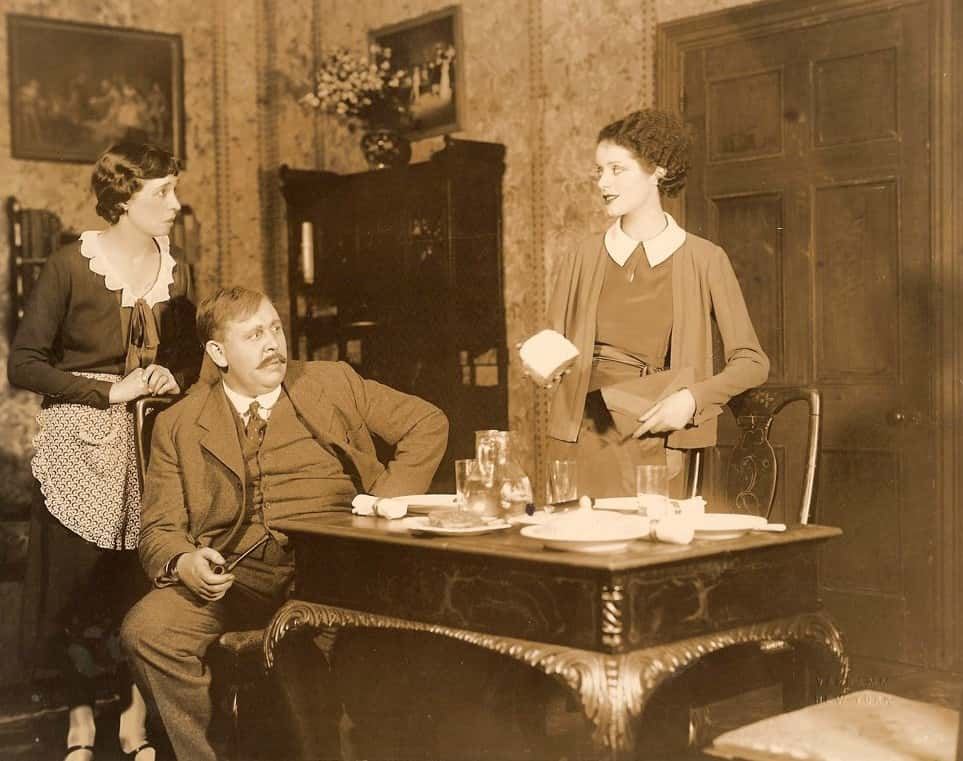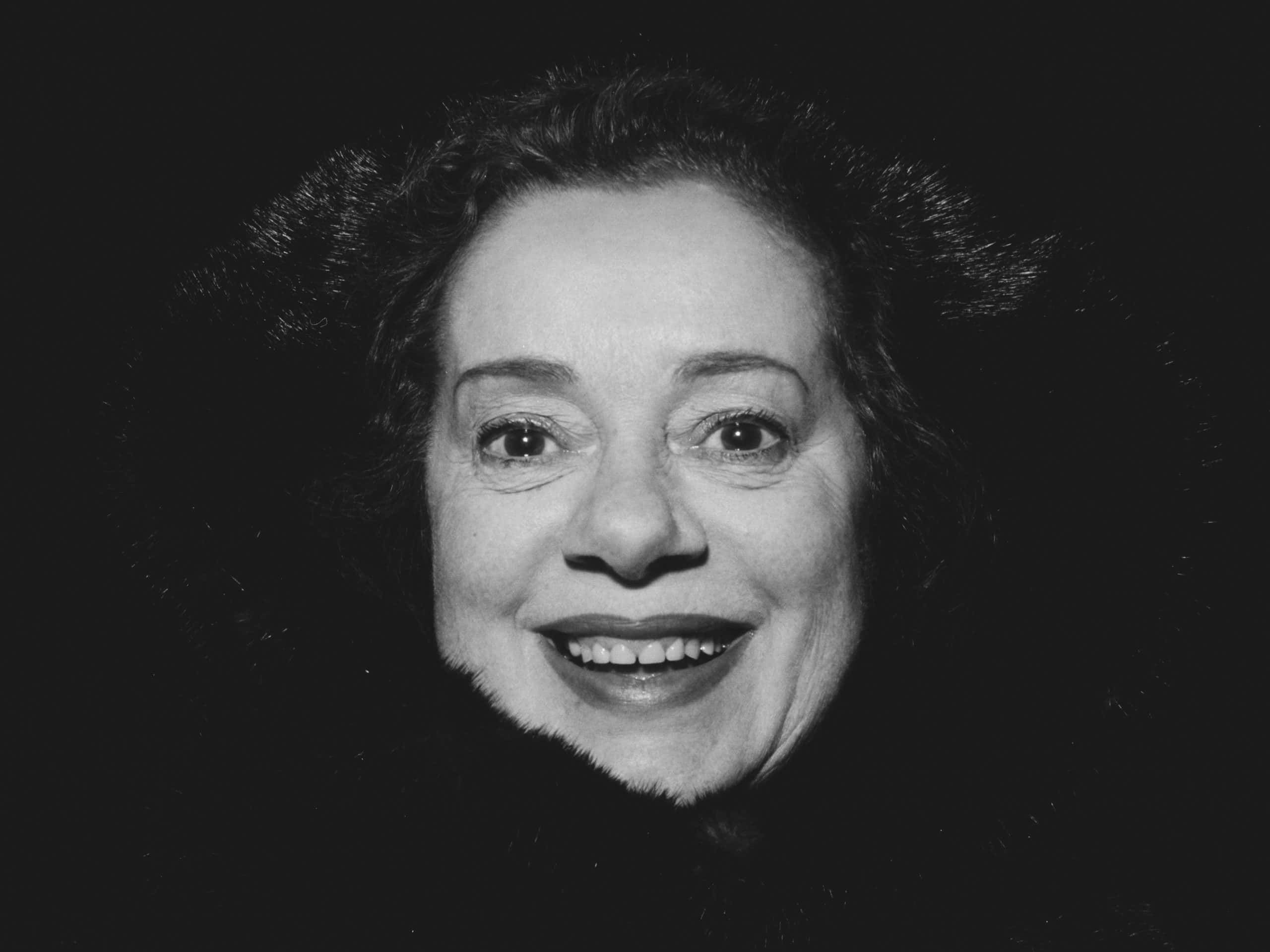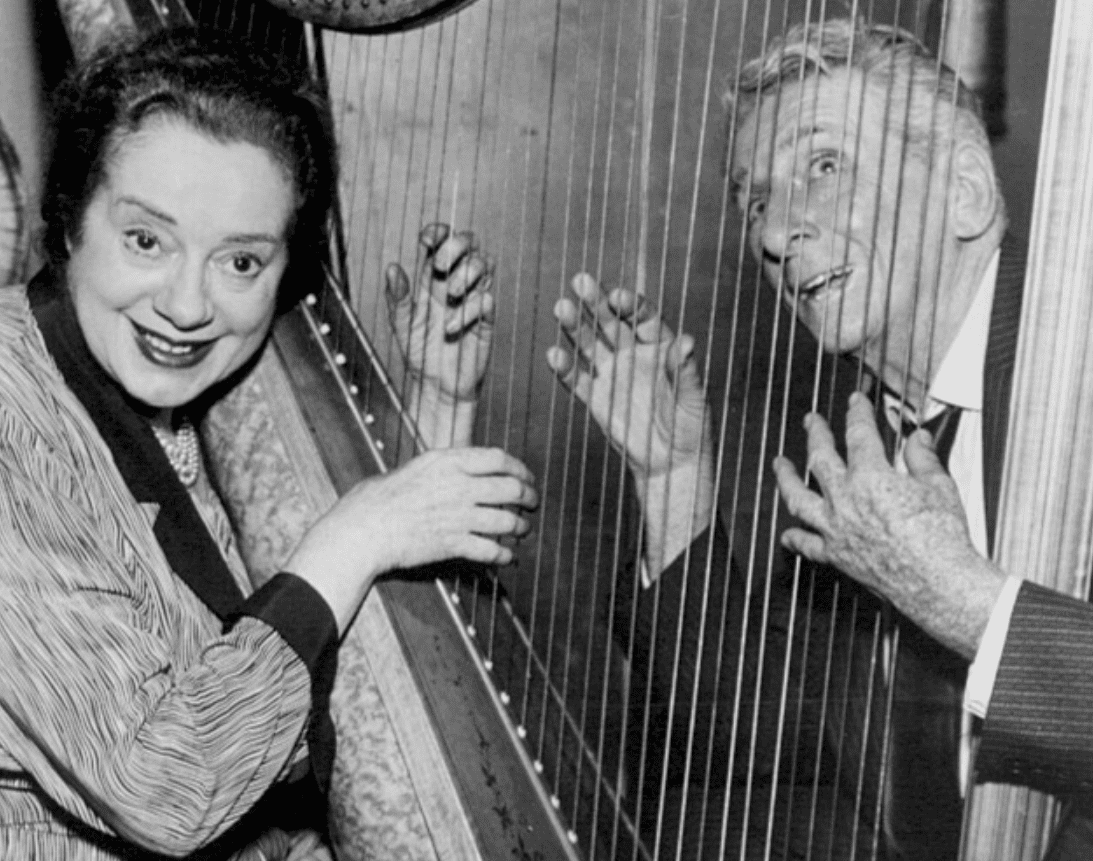Best remembered for her title role in The Bride of Frankenstein, Elsa Lanchester will always be the ultimate woman in horror. But as a British turned American actor who worked on stage, film, and television, there is so much more to Lanchester than the Bride. From her radical roots to the jaw-dropping revelations in her autobiography, here are 50 facts about the one and only Elsa Lanchester.
1. The Parent-Rebels
Elsa Sullivan Lanchester was born to Edith (Biddy) Lanchester and James (Shamus) Sullivan in Lewisham, London in 1902. She was the second of two kids, as her brother—Waldo Sullivan Lanchester—was five years older than her. Edith and James were socialists with a bohemian approach to life. They refused to get married because they did not feel the need to legalize their relationship. As Lanchester put it, they were "advanced" and "arty" in their support of "pacifism, vegetarianism, socialism, atheism, and all that".
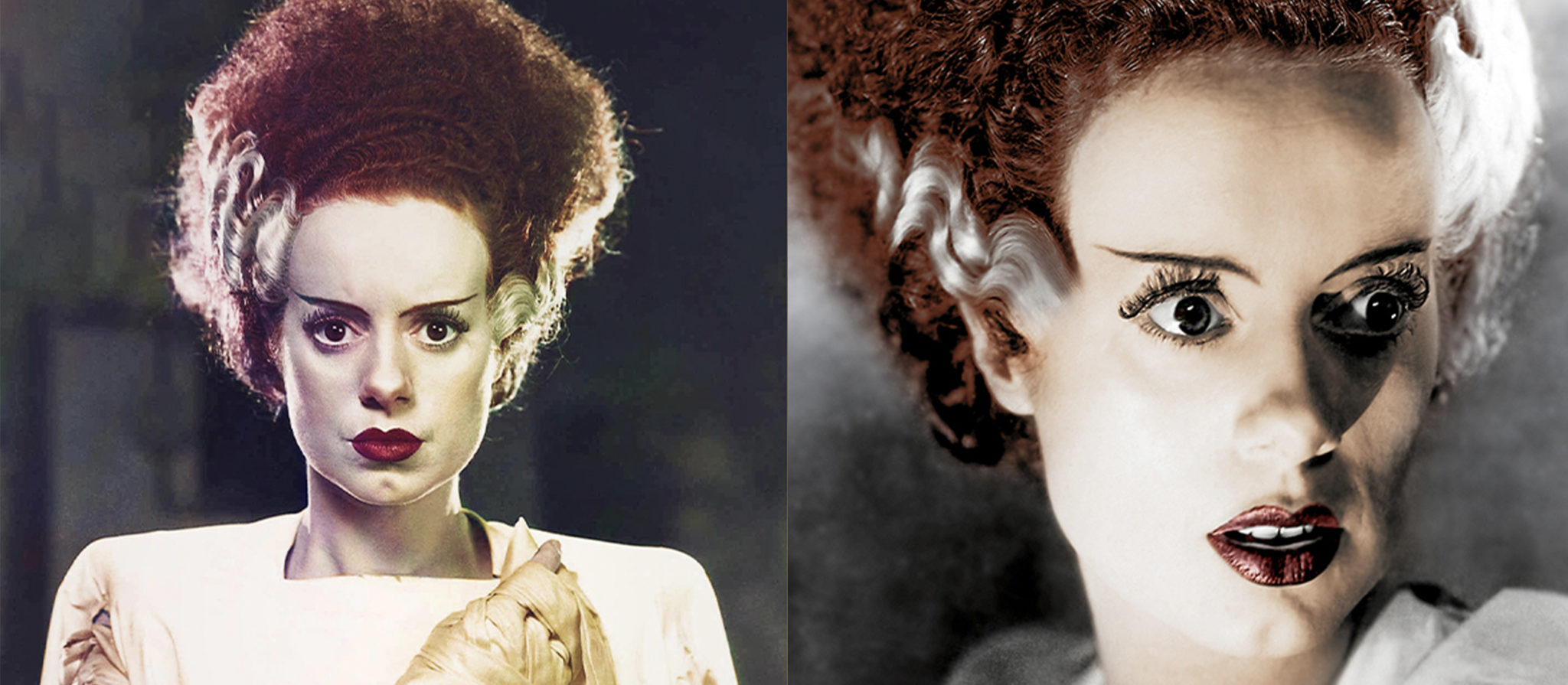
2. Bride of Frankenstein
Lanchester's most famous role is, of course, her portrayal of the Bride of Frankenstein. But few people realize that she actually played two roles in the movie, one as the narrator and writer of the novel, Mary Shelley, and the other as the monster’s bride. She felt the most memorable scene she had done in the movie was when she had to scream and felt that she had always been asked to scream in all movies she had done since. "I hope I am not hired on that talent alone".
3. Painful Art
It isn’t easy being an actor. Especially back in the day when there weren’t as many beauty products and procedures as there are now, or any camera effects. For instance, Lanchester, who was 5’4" had to wear stilts to play the 7 feet tall "bride". The bandages on her legs were wrapped around so tightly that she was unable to move and had to be carried in the studio.
4. Painful Art II
And the pain didn’t just stop there. Lanchester also had to be fed through a straw. Even worse, her hair was wrapped around a wire mesh cage for her iconic updo and her eyes had to be kept "taped" open for longer scenes.
5. Feminist by Accident
Lanchester probably did not view herself as a feminist, but that is how she comes across in her autobiography, according to researcher Tom Blunt. He felt that her life story contained a captivating nugget of "feminist and LGBTQ history". In Lanchester's own lifetime, no one appreciated or perhaps even noticed these scandalous dimensions of her personality.
6. Creative Entrepreneur
After the war was over, Lanchester first opened a children’s theater, and then a nightclub in London which she named "Cave of Harmony". Many modern plays and cabarets were performed here, and Lanchester revived old tunes and ballads. The Cave of Harmony became a go-to place for many intellectuals and artists, such as H.G. Wells, James Whales, and Aldous Huxley.
7. A Dream Unfulfilled
Lanchester’s childhood dream had been to "dazzle lovers of the classical dance with graceful movements ‘in a mist of gauze or chiffon.’" Sadly, this didn’t work out as planned. Even in her club, she began to focus more on singing. This wouldn't be the first time that Else learned that some things just don’t happen the way you want them to.
8. Royally Displeased
After years of cutting her teeth in nightclubs, Lanchester finally got her big break. She was asked to do a comic speciality number in the Midnight Follies at the London Metropole. Just when she thought she'd made it, disaster struck. A member of the royal family did not approve of a song she was singing, titled "Please Sell No More Drink to my Father". They even walked out while she was in the middle of her performance. This was a death knell for her performance, and sure enough, she was fired.
9. Meeting Laughton
The cabaret and nightclub appearances helped Lanchester get some more serious work on stage. She booked a role in a play called Mr. Prohack in 1927. Little did she know, this job would change Lanchester's life forever. While rehearsing the play, Lanchester met fellow actor Charles Laughton. Two years later, the pair were married.

History's most fascinating stories and darkest secrets, delivered to your inbox daily.
10. Rookie Mistake
Unfortunately, despite all Lanchester's popular songs, the Cave of Harmony never made much of a profit for one key reason. Lanchester never managed to get her establishment a liquor license.
11. Too Close for Comfort
With the glamor of the London stage, it might seem like Lanchester and Laughton had a cute flirtation, but nothing could be further from the truth. In a creepy twist, one play saw the pair not cast as lovers but as father and daughter. Yikes.
12. The Stage Life
Lanchester and her husband Laughton often shared the stage, acting in plays by Shakespeare and Chekhov. They weren't afraid to go toe to toe either. In one production, Lanchester played Peter Pan while her hubby played Captain Hook! In a funny twist, Lanchester played Peter like a general while Laughton played Hook like a charmer. By the time the play was over, kids were more afraid of the hero than the villain.
13. Life with Laughton
There is no consensus about how she found out, but soon after the wedding Lanchester discovered her husband's dark secret: despite their long courtship, Laughton was not interested in women at all. In one perturbing account, Laughton came clean to his bride and then coolly ordered her not to get too upset by the situation. Lanchester was so traumatized that she claims to have gone deaf for a full week. And that's not even the worst version of this story...
14. Happily Married?
Naturally, it must have been a shock for Lanchester to find out about her husband’s liking for men. However, she seemed to take it in stride. As one of her biographers wrote, "Elsa could have burst into tears, collapsed or struck Charles" but she did nothing of the sort. Instead, she seemed to shrug it off, and said it was fine, and that she understood. The marriage lasted for over 30 years.
15. Early Anti-Vaxxers
Lanchester’s parents had strong opinions about everything. While many of their ideas have aged well, one has not. They wanted to avoid vaccination at all costs for their daughter, because apparently their son "had taken very ‘badly’" to it before. So, they did what any parent would do of course. Moved the family six times to escape the horrors of being disease-free.
16. Kid-less
Lanchester and Laughton did not have any children and to this day, no one is sure about why. Lanchester claimed that Laughton did not want kids. But Maureen O’ Hara, a great friend of Laughton’s, revealed a dark alternative. She claimed that the couple couldn't have children because Lanchester had a botched abortion earlier in her life. Even more tragic, O'Hara claimed that Laughton desperately wanted children.
17. The Bigger Picture
Lanchester was asked why she allowed her husband’s biographer, Charles Higham, to mention his homosexuality so openly in his work, which was published in 1976—14 years after Laughton had passed. She replied that she wanted other people to be encouraged to talk about whatever made them depressed or overwhelmed because it might help people who faced the same kind of problem and "must deal with the terrible guilt that Charles felt most of his life".
18. Insecure
After Laughton and Lanchester moved to America, Laughton quickly hit the big time and eclipsed his wife's career. But behind closed doors, the truth came out. Laughton was terribly threatened by Lanchester and even tried to sabotage some career opportunities so that his wife wouldn't be able to show him up. Ice cold, Laughton.
19. Inspiration can Strike Anywhere
And that means literally anywhere! Lanchester found her inspiration for the Bride of Frankenstein from the swans in Regent Park. It was their spitting and hissing that she channelled in her performance as the Bride. "They’re really very nasty creatures," she said.
20. No Speech, No Credit
The character of Mary Shelley had an epilogue, which was supposed to come at the end of the film. However, it was cut from the final version, so the viewers didn’t get to see Lanchester speak those lines. But there was an even crueler betrayal in store. Lanchester's name also didn’t even appear in the onscreen credits for playing the Bride. Instead of her name there was a question mark ("The Bride: ?").
21. Screen Time
Perhaps the Bride does not receive onscreen credit because in the final version of the movie she ended up having only three minutes of screen time. This was after the film ran its preview screenings in the first week of April and was extensively edited according to audience feedback. At least one scene with the Monster was added, but the Bride’s character didn’t get any such treatment.
In any case, how many people have left such a lasting impact with just three minutes of screen time?
22. Who Wore it Better?
Lanchester was a trendsetter in her nightclub days. She's the one who introduced the androgynous ballet tights, top hat and high heels combination. But this story doesn't have a happy ending. Lanchester later claimed that Marlene Dietrich stole her look and used it without crediting her. Oops. Doesn’t sound like the two ladies were on the best terms.
23. Close Collaborator
While Laughton found success in the USA, Lanchester had a hard time finding work. Sad and desperate, she took up a position at the Turnabout Theater where she performed comedy routines and songs that were part of her repertoire at the Cave of Harmony. Soon Forman Brown, one of the founders of the Turnabout, started adding his own songs to her selection and she found in him a "perfect collaborator". He ended up writing 60 songs for her over the years.
24. Monster-ous Leanings
Although she did not play the role of a monster again after the Bride of Frankenstein, Lanchester appeared in another horror movie in which she played the monster’s mother—so in essence, the monster's creator. Titled Willard, the film about a demonic rat was a surprise box office success and inspired a bunch of other filmmakers to produce animal-themed horror movies.
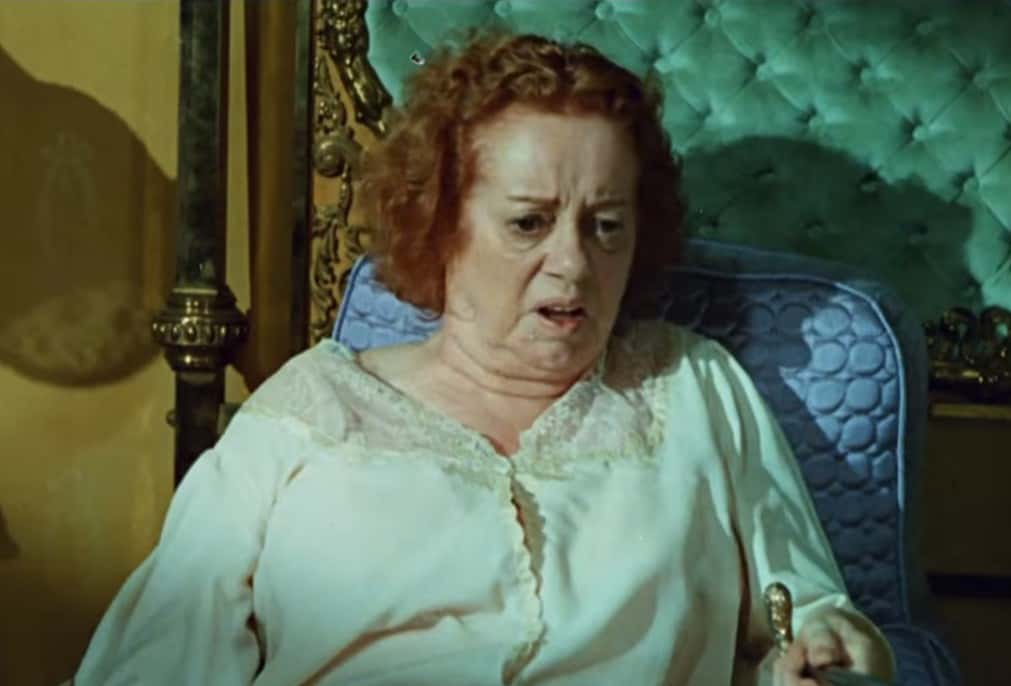 Willard (1971), Cinerama Releasing Corporation
Willard (1971), Cinerama Releasing Corporation
25. Sirens Blaring
There's another story about how Lanchester found out that her husband was gay, and it's somehow even worse than the earlier version. In this account, the London authorities actually caught Laughton when he was with a boy.
26. Concert Time
Seeing that opportunities in TV and film weren't exactly pouring in, Lanchester decided to take matters into her own hands. She went back to her nightclub roots and took a show on the road. Elsa Lanchester’s Private Music Hall toured across America and Canada, taking the show to colleges and town halls, covering over 22,000 miles by car.
27. I said No, No, No
Elsa's grandparents were deeply traumatized by their daughter's decision to live with her love without marrying him. In the end, they took out their horror with a chilling action: They kidnapped their own daughter and sent her to an asylum. The incident made headlines across the United States. "The Lanchester Kidnapping Case" plunged the family into a huge scandal.
28. A Free Woman
Laughton had a huge gallbladder infection in 1961, around the time Lanchester’s show was still in development. He was in the hospital for a long time and she remembered thinking he had lost his health for good, even when he was discharged. "I had the feeling—that I was a free woman. That’s a terrible thing to say…But at that moment, that’s how I felt".
29. The End of Laughton
It was when he was on tour that Laughton fell and broke his collarbone. As though that injury wasn't bad enough, when the doctors examined him, they discovered something even worse. Laughton had bone cancer. Lanchester spent the next year caring for her husband and refusing to reveal the extent of his illness. Laughton passed on in December 1962. Even when he perished, he didn't know that he had cancer.
30. Sharing Secrets
Lanchester loved revealing sordid secrets about Marlene Dietrich, her co-star in Witness for the Prosecution. One open secret was the "tape lifts" Dietrich used to lift her skin and keep it tight. Lanchester told Laughton about it and he was intrigued enough to ask a makeup artist to steal one so he could try it. Whether it worked for him or not is a mystery, but Dietrich was obviously a fan and used them for the whole film. Don’t think it’s something I would try.
 Witness for the Prosecution, United Artists
Witness for the Prosecution, United Artists
31. A Mighty Girl
When Lanchester was growing up, it wasn't normal for parents to educate their daughters, but then again, Elsa's parents weren't like everybody else. Her mother Edith had quite a few college degrees and wished to homeschool her daughter. After years of effort, Lanchester was finally enrolled in the same school her brother went to. The school was run by renowned socialist, Frederick Kettle, and she was the only girl in the facility.
32. Dancing Queen
Lanchester always wanted to learn classical dancing. She was 11 when her Edith enrolled her in classes with the world-famous dance pioneer Isadora Duncan. Later in life, Lanchester would earn some extra money by teaching local girls to dance like the famous Isadora, now hailed as the Mother of Modern Dance.
33. Paris is (not) Always a Good Idea
Duncan was starting a dance school in Paris to "Teach the World to Dance" and offered Lanchester all-expenses-paid admission. Naturally Lanchester went. Unfortunately, the experience didn’t go according to plan. Duncan was pregnant and taught dance from a semi-recumbent position, and Lanchester only learned how to "become an autumn leaf". She went back home as soon as there were rumors of conflict in the region.
34. One-Woman Show
Later in his life, Laughton directed his wife in a one-woman show called Elsa Lanchester—Herself. The autobiographical revue opened in New York to rave reviews. Despite the cold, stormy night of the premiere, a columnist wrote that, "If there’s anyone who can make you forget 17.4 inches of snow, it’s Elsa Lanchester". The show was a huge success, running for ten weeks in New York, and six weeks in Hollywood.
35. Comic Additions
Witness for the Prosecution was based on a play by Agatha Christie and did not have any comic scenes between the characters played by Laughton and Lanchester. As a sign of how much audiences adored Laughton and Lanchester's chemistry, their characters were added specially to the screenplay.
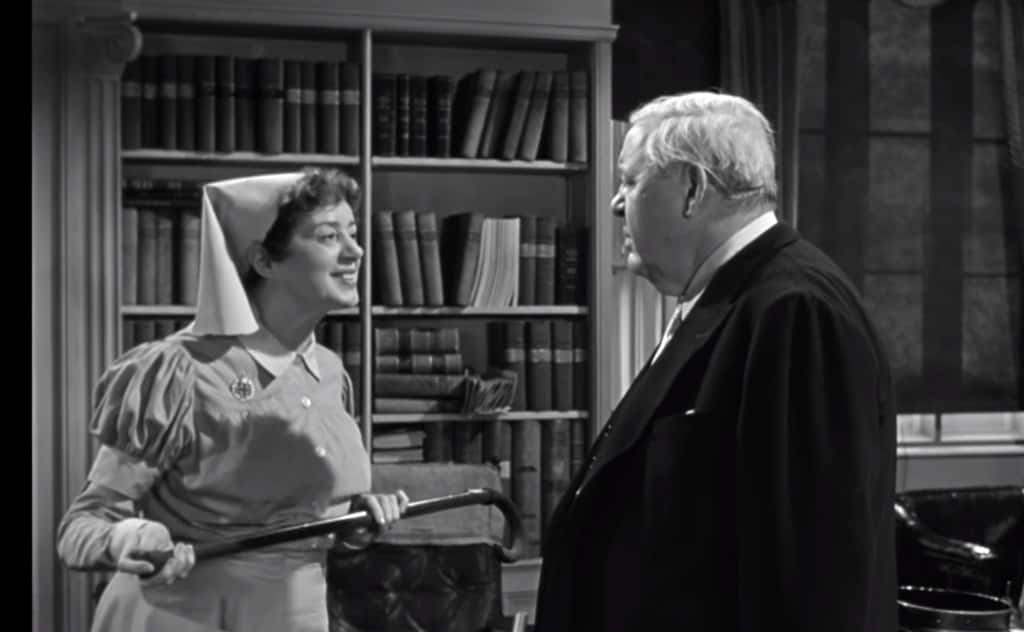 Witness for the Prosecution, United Artists
Witness for the Prosecution, United Artists
36. But How?
Despite Laughton's shocker about his orientation, Lanchester stayed by his side until his death and, according to her autobiography, enjoyed their marriage. But how? Some critics believe that Lanchester was what we would now call asexual. She didn't need a romantic husband and enjoyed that Laughton was her best friend and life partner.
37. Method Acting
One day, Lanchester came home to a frightening sight: Her husband Laughton had collapsed in the pool. After Lanchester frantically called for a help and pulled Laughton out of the water, her husband revealed the awful truth. It was all fake. Laughton's character suffers from a heart condition in Witness for the Prosecution and as the actor was practicing how he'd portray a heart attack, he decided to fake one in the swimming pool.
 Witness for the Prosecution, United Artists
Witness for the Prosecution, United Artists
38. Disney and TV
As she got older, Lanchester did small roles for some Disney movies like Mary Poppins, That Darn Cat and Blackbeard’s Ghost. She also made several appearances on famous TV series like I Love Lucy and The Man from U.N.C.L.E. These mainstream roles were a little strange, considering how unconventional Lanchester was, but hey, they paid the bills and kept her busy.
39. An Honest Perspective
Lanchester was humorously resigned to her film career, which she said was "large parts in lousy pictures and small parts in big pictures". Nevertheless, she was happy because she had performed widely on stage because she "preferred performing direct to an audience".
40. Sound of Music
Some of Lanchester’s nightclub songs were so well-liked and famous that Columbia Studios invited her to record them. These included "Please Sell No More Drink to my Father" and "He Didn’t Oughter" on the first disc and "Don’t Tell my Mother I’m Living in Sin" and "The Ladies Bar" on the other.
41. The Nominations Are…
Lanchester was nominated for an Academy Award for Best Supporting Actress twice in her career. Once was for Come to the Stable (1949) and the second time was for Witness for the Prosecution (1957). Although she did not win an Oscar, she did win a Golden Globe Award for Best Supporting Actress in Witness for the Prosecution.
42. Prologue Dilemma
Lanchester’s shot in the prologue of The Bride of Frankenstein was considered "too revealing" because her cleavage could be seen. Oh! The horror!
43. Writing Days
Lanchester could really do it all. After opening a nightclub and conquering stage and screen, the thespian went on to write two autobiographies. One was titled Charles Laughton and I and was published in 1938. The second was published in 1983, and was titled Elsa Lanchester, Herself. The latter had gone out of print but was rediscovered by Tom Blunt who ran a social media campaign to get it back in circulation.
44. Paying Tribute
Tom Blunt, a producer and performer in Los Angeles, was researching on "undersung women in film" when he came across Lanchester’s last biography in an old bookstore. He was hooked to it and made it the centerpiece of an event titled The Elsa Monologues where several nightclub performers and Broadway artists came together to pay tribute to the lady. They read excerpts from the book in between clips from her work in the film and television industry.
And that’s why, ladies and gentlemen, you should keep writing about your life. You never know when someone might discover your writing after you’re gone and realize you must have been a pretty awesome person.
45. Back in Print
After vigorously campaigning for Lanchester's autobiography to go back into print, Blunt was finally contacted by Chicago Review Press, who agreed that Lanchester’s voice needed to be heard. They made a bid on the official rights, but it took several years to finally win and reprint the book. However, it is back in print now and has a foreword written by Mara Wilson, a talented actor and memoirist that most people probably know best as Matilda from Matilda.
 Wikimedia Commons, Gage Skidmore
Wikimedia Commons, Gage Skidmore
46. The End
Lanchester’s health started declining shortly after the release of Elsa Lanchester, Herself in 1983. She suffered two strokes in the course of the next two and a half years, and eventually became completely bedridden. Things only worsened. In December 1986 she got pneumonia and was unable to recover. She was in Woodland Hills, California, and passed on at the Motion Picture Hospital. Her body was cremated and the ashes were scattered in the Pacific Ocean.
47. The Last Hurrah
The last role Lanchester played was as a Miss Marple-esque character in a spoof titled Die Laughing in 1980. Ironically, it seems like an apt title for her life.
48. Dialect Matters
Lanchester claimed that Laughton taught Dietrich how to speak in a Cockney accent for a scene in Witness for the Prosecution where she impersonates a Cockney woman. Dietrich was so intent on being true to the character that she tried on various shawls, scarves and wigs at their house.
 Witness for the Prosecution, United Artists
Witness for the Prosecution, United Artists
49. First Film
Lanchester’s first film occurred long before she met her husband. She appeared in the amateur movie The Scarlet Woman in 1925 with her friend, the secretly gay writer Evelyn Waugh, who also penned the script. The unlikely friends weren't just co-actors but party-hoppers who would often frequent Lanchester's nightclub together.
50. Tough Cookie
The costume for Bride of Frankenstein was so constrictive that one of Lanchester's stand-ins had a full blown panic attack while she was strapped into the claustrophobic outfit.
Sources: 1, 2, 3, 4, 5, 6, 7, 8, 9, 10, 11, 12, 13, 14, 15, 16











